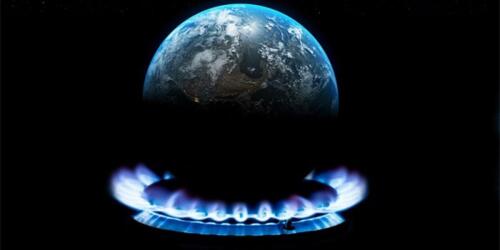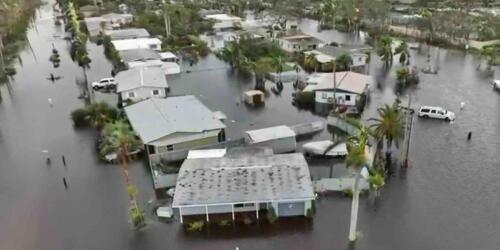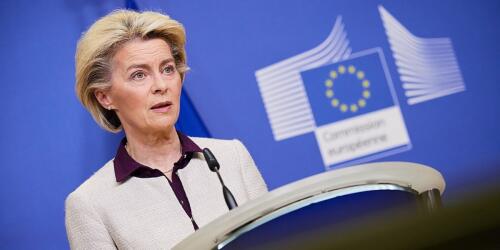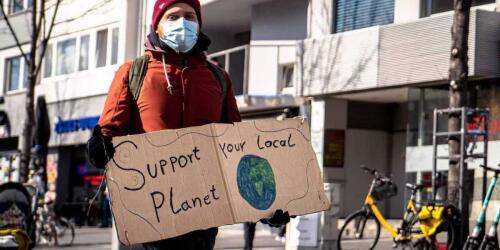crisi energetica
The weekly round-up on the climate crisis and data on carbon dioxide levels in the atmosphere. December 5th has entered into force the $60 per barrel cap on Russian oil transported by sea imposed by the G7 countries, the European Union (with the exception of Bulgaria, which was given a longer period to comply) and Australia.The measure allows Russian crude to be shipped to third countries using tankers, insurance companies and G7 and EU lenders, only if the cargo is purchased at or below the price cap.Given that major shipping and insurance companies are based in G7 countries, the imposed limit could make it difficult for Moscow to sell its oil at a higher price.The level of the cap will be reviewed by the EU and the G7 every two months.The first review is scheduled for mid-January and “will need to take into account the effectiveness of the measure, its implementation, international take-up and alignment, market developments and the potential impact on member countries...
The weekly round-up on the climate crisis and data on carbon dioxide levels in the atmosphere. 2022 was the year that saw the climate, energy and food crises combine.Energy markets have been on a roller coaster.In response to Russia's invasion of Ukraine, Western countries imposed financial sanctions on Russia and embargoed its oil exports.Russia has cut gas supplies to Europe and large importers, such as Germany, have had to reduce energy consumption and look elsewhere for supplies.Low- and middle-income countries have struggled to access affordable energy.Countries such as Pakistan, Bangladesh and Sri Lanka faced blackouts;rising fuel prices have spilled over into food markets.In 2023 (and in the years to follow), the energy crisis will change economic and energy balances and supply chains, and could have effects on the ecological transition. In an article on Nature, scholars Andrea Goldthau and Simone Tagliapietra have highlighted five issues that we will not be able to av...
The weekly round-up on the climate crisis and data on carbon dioxide levels in the atmosphere. “Loss and Damage” is the term used to describe how climate change is already causing severe and, in many cases, irreversible impacts around the world – particularly in vulnerable communities. As he explains to Carbon Brief the Prof.Saleemul Huq, director of the International Center for Climate Change and Development (ICCCAD) and pioneer of loss and damage research: “The term ‘loss and damage’ refers to the impacts of human-induced climate change affecting people around the world.Damages refer to things that can be repaired, such as damaged homes, while losses refer to things that have been completely lost and will not come back, such as human lives.” “We are losing infrastructure, agricultural land – and we are losing what we can call a hope of having sustainable economic growth and a future for all,” adds Ineza Umuhoza Gra...
The weekly round-up on the climate crisis and data on carbon dioxide levels in the atmosphere. The European Commission he presented on 18 October another series of emergency measures to combat the increase in energy prices, without however setting a ceiling on the price of gas since member states are still divided on the matter.Over 15 EU countries are in favor, including Italy, Poland, Greece and Belgium, but there is no agreement on how to structure the proposal.Germany and the Netherlands are against this, according to which a cap on gas prices could make it difficult for individual countries to attract fuel from global markets at a time when Russian supplies are in short supply.France would instead like to extend the scheme used this summer locally by Spain and Portugal to the entire EU. The proposals will now have to be approved by European Union member states.Among these, the idea of fixing a temporary "maximum dynamic price" to trade on the Euro...
The weekly round-up on the climate crisis and data on carbon dioxide levels in the atmosphere. From West Nile fever to asthma, climate change is exacerbating infectious diseases and hampering our ability to fight them.This is what emerges from research published in the magazine Nature Climate Change in August, according to which more than half of the infectious diseases known to impact humans have been made more dangerous by climate change. Diseases such as hepatitis, cholera, malaria and many others are spreading faster, affecting large segments of the population around the world and becoming more severe due to climate-related events.And it's not just transmissibility that's increasing:Climate change has impacts on health, immunity and access to medical care. “The global health response to these diseases will have to be massive,” he commented Erik Franklin, associate professor at the University of Hawaii and one of the study's authors.“It's more p...




